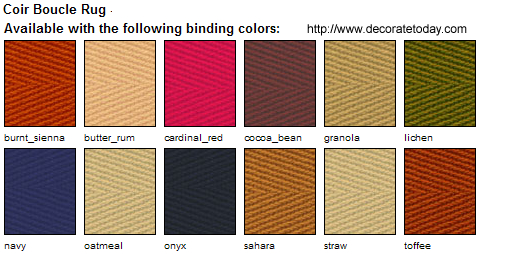Toxic Carpet: Dangerous Toxins in Your Home
Hidden health hazards living in your carpeting
Quick Navigation:
🚨 New Carpet Dangers
Toxic Chemical Cocktail
New carpets contain a dangerous mix of chemicals that are known carcinogens and produce fetal abnormalities in test animals. These chemicals also cause hallucinations, nerve damage and respiratory illness in humans.
🧪 Toxic Chemicals Found:
- • Toluene
- • Benzene
- • Formaldehyde
- • Ethyl benzene
- • Styrene
- • Acetone
⚠️ Health Effects:
- • Known carcinogens
- • Fetal abnormalities
- • Hallucinations
- • Nerve damage
- • Respiratory illness
👃 "New Carpet Smell" (4-PC)
That familiar "new carpet smell" comes from 4-PC, which is associated with eye, nose and upper respiratory problems. 4-PC is used in the latex backing of 95% of US carpets.
🧬 Additional Harmful Compounds
- • Adhesives, flame retardants, stain protectors
- • Mothproofing chemicals containing naphthalene (toxic to newborns)
- • Fire retardants with PBDEs (damage thyroid, immune system, brain development)
- • Chemical sprays, artificial dyes, antimicrobial treatments
🛡️ Scotchgard Warning
In 2000, 3M removed perflouro-octanyl sulphonate from Scotchgard because it caused reproductive problems in rats.
🏠 Old Carpet Issues
Older carpets don't fare any better. Even though some hazardous Volatile Organic Compounds (VOCs) may have dissipated, many contain chemicals that have been banned in later productions.
🦠 Contamination Issues
- • Heavy burden of dust mites
- • Pesticides from indoor spraying
- • Toxins from shoes, feet, and pets
- • Paint and flooring chemical residues
📊 Shocking Statistics
- • Can hold 8x their weight in toxic dirt
- • 80% of pesticide exposure occurs indoors
- • Chemicals remain for years after application
- • 10-50x higher chemical exposure than outdoors
⚠️ EPA Warning
The EPA states that 80% of human exposure to pesticides occurs indoors. Every time you spray for bugs or use a fogger, chemicals settle in your carpet and remain there for years.
✅ Safe Solutions & Recommendations
🏗️ Best Option: Remove Carpeting
The obvious preferred option would be to get rid of any carpeting to reduce your exposure to carpet toxins, and replace with:
Wood Flooring
Bamboo
Tiles
Natural Alternatives
🐑 Natural "Green" Flooring Options

🐑 Natural Wool Carpets
Most popular choice due to liquid repelling ability, durability, warmth, and natural flame retardant properties. Make sure to get woven rugs.

🌿 Hemp Rugs
Mold/mildew resistant, perfect for kitchens, bathrooms, patios

🌾 Sisal Rugs
Gaining popularity, durable natural fiber option

🌊 Sea Grass
Washable, compostable at end of life

🥥 Coir (Coconut)
Coconut husk fiber, sustainable and durable
Important: Even with "green" rug options, ensure they are 100% organic, pesticide-free, and NO CHEMICALS have been applied.
🏠 Can't Change Your Carpet? Reduce Exposure
🚪 Prevention
- • Use high-quality doormats
- • Remove shoes when entering
- • Stop toxins at the door
🔧 Maintenance
- • HEPA vacuum cleaners preferred
- • Steam cleaning kills dust mites
- • Use non-toxic cleaning products
🌬️ Air Quality
- • Air house frequently
- • Indoor plants for air purification
- • Quality HEPA air purifiers
✅ Installation Tips
- • Choose Green Label Plus certified
- • Skip glue - use staples instead
- • Ensure proper ventilation
🔬 Scientific Research: Laboratory Evidence
Study by Dr. Rosalind Anderson, Ph.D.
Journal of Nutritional and Environmental Medicine (1995) 5: 375-386
🐭 Laboratory Results
Under carefully controlled conditions, laboratory mice breathed air containing chemical mixtures released by new carpets. Like people, the mice became acutely ill with:
- • Eye, nose, and throat irritation
- • Difficulty breathing
- • Tremors and falling
- • Altered posture
- • Paralysis of legs
- • Stupor and convulsions
- • Some mice died from exposure
- • Over 200 chemicals identified
👥 Human Symptoms Reported
Symptoms reported by carpet owners were diverse: headache, confusion, loss of memory, depression, dizziness, burning eyes, nose, and throat, difficulty breathing, fatigue, weakness, skin rash, hair loss, etc.
🏡 Your Healthier Home
If you follow as many of these precautions as possible, you will certainly have a cleaner and healthier home!
Information contained on this website is provided as general reference only. For application to specific circumstances, professional advice should be sought. GreenAndHealthy.Info strives to maintain accurate and up-to-date information; however, mistakes do happen.